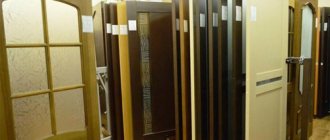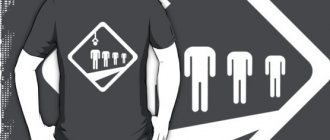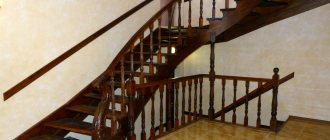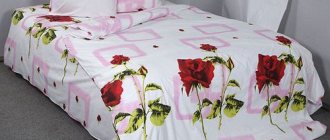Despite the fall in real incomes of Russians and the economic crisis in the country, furniture sales continue to grow. Many Russians replace their furniture sets a few years after purchase. Although the supply is large, the demand remains stable, it is not completely covered, and the industry is open to new participants.
Our business plan for furniture production will tell you in more detail how to open a business, what to pay attention to when starting and developing a company. The article provides approximate payback calculations that will allow the reader to assess the prospects for earning money in this industry.
1. Brief analysis of the market and target audience 2. What kind of furniture can be produced? 3. Manufacturing stages 4. What is needed to start a furniture production? 5. Registration 6. Personnel 7. Workshop 8. Office 9. Raw materials 10. Equipment 11. Marketing policy 12. Profitability and payback of a mini-factory: financial plan with calculations 13. Advantages and disadvantages of business 14. Possible risks
Brief analysis of the market and target audience
Medium and small companies produce about half of the total volume of furniture in Russia. Experts believe that the share of such enterprises will only increase.
Large enterprises also operate in the Russian market. One of the most well-known companies is the IKEA Group of Companies, which occupies about 20% of the Russian market.
Furniture sales continue to grow even in times of crisis. The segments of cabinet furniture and economy class furniture are especially promising.
The furniture market depends on the construction market - the higher the volume of new housing commissioned, the greater the sales of interior items.
Buyers are both individuals and companies: resellers (furniture stores, hypermarkets) and entrepreneurs (for cafes, shops, offices). In addition, online furniture sales are growing.
What kind of furniture can be produced?
Before starting a business from scratch, it is important to determine your specialization. You need to proceed from financial capabilities: you can open a universal production, or you can open a production with a narrow specialization.
There are several classifications of furniture, let’s choose one of the main ones - by design. Furniture can be:
- soft;
- case;
- built-in;
- collapsible, folding;
- transformers.
Based on this, you can choose the specialization of your business. You can create furniture for children, glass and metal products, wicker furniture, bar counters.
Organizing production is a complex matter, so it is better to immediately choose a market niche and concentrate on it. Once you achieve success in a particular direction, you can expand your range.
Manufacturing stages
The furniture production technology depends on the specific class, but the general sequence is the same:
- First, development and preparation of a working sketch are carried out, on the basis of which an individual order is created or mass production begins. The work is carried out by the designer using computer equipment based on data received from the surveyor and the customer. After selecting materials and dimensions, and final approval, the sketch is sent to work.
- Materials are cut using a machine or manual method in accordance with the drawings. Depending on the raw materials used, products are processed in different ways. Using wooden furniture as an example, gluing, planing of lamellas, sawing of parts, finishing with veneer, drilling, and sanding take place.
- When all components are ready, additional elements are fastened.
- Control check and acceptance are carried out.
What does it take to start a furniture production?
Most of the capital will be spent on purchasing equipment. You need to be prepared for the fact that you will need to pay for rent for several months in advance. Additional costs include advertising costs (at a minimum).
Table 1. Initial costs for a furniture manufacturing business.
| Expense item | Cost, rub. |
| Registration | 25 thousand |
| Rent of premises (100 sq. m) and office (25 sq. m) | 100 thousand |
| Equipment | 900 thousand |
| Raw materials | 250 thousand |
| Salary, 11 people | 370 thousand |
| Additional expenses | 200 thousand |
| Total | 1.845 million |
The calculations are relevant for a city with a population of up to 1.5 million people. Additional costs for utility bills, promotion, and preparation of the premises are taken into account. The amount of tax deductions is not taken into account.
Market Review
Where to start furniture production? Before opening a furniture shop, be aware that small and medium-sized businesses in this area typically specialize in something specific. You should not grab hold of producing everything in a row, but you should try to make every effort to gain a foothold in some narrow niche. This is a fundamental rule in the survival strategy in furniture production. You can focus your efforts on your own production of the following furniture:
- hull;
- soft;
- advertising;
- for trade organizations.
Promotional furniture is used to decorate points of sale and attract as many buyers as possible to a product or service. For trade organizations, such as shops, pharmacies, shopping centers, salons, special shelves and display cases are required on which the assortment will be displayed.
Furniture manufacturing involves a large number of specializations. You can focus your efforts on collecting any products with limited functionality, such as, for example, Euro pallets or computer tables, or you can make glass tables and cabinets, or produce furniture from a specific material - plastic, natural wood.
Furniture manufacturing as a business does not only mean creating goods. Services for restoration of cabinet and upholstered furniture are also popular. These services are especially in demand among citizens with low incomes, and there are many of them in the country. The opposite direction is the restoration and restoration of antiques. In this case, services will be in demand in regions that are economically developed.
An unoccupied niche in this market includes the production of wicker furniture. A small enterprise can master it, but wicker chairs, sofas, and cabinets continue to be imported from abroad, leaving them in the high price segment.
An excellent specialization for small and medium-sized businesses is built-in furniture. In this case, an individual approach to each client is required. Large enterprises cannot satisfy individual customer requirements.
To understand whether it makes sense to start a furniture manufacturing business, pay attention to the development trends in related fields. If the real estate market is developing, foreign cars are being purchased, the market for antiques and advertising services is developing, and this dynamics can be observed in the next two to three years, we can start in this direction. On the other hand, there will always be demand for furniture: after its decline, the upward trend returns very quickly.
Organization of production
Where to start making furniture? Once you have decided on your specialization, you need to find a suitable room. The minimum required area that will be required is 200 m2. Its rent will cost 1300-6500 rubles per year per 1 m2. This price range depends on the region.
In Moscow and St. Petersburg, you need to adjust to the cost of 1 m2 at 5-6.5 thousand rubles. per year, and in regions, especially economically undeveloped ones, you can quite count on the lowest prices. The average is 3,300 rubles per year per 1 m2. Total rent will cost 650-660 tr. in year. If you can rent a room for a cheaper long-term, that will be very good.
Depending on the specialization, you need to spend from 350 thousand rubles on equipment. up to 1.5 million rubles. This does not take into account the purchase of office equipment, software, or a truck with which the furniture will be delivered to the consumer or to points of sale. You can purchase both standard machines and entire production lines that are made to order.
Pay attention to purchasing quality components. Please immediately note that it is impossible to produce furniture that will be of high quality and competitive, while relying only on domestically produced parts and fittings. You will have to establish connections with distributors of foreign companies that offer everything you need for furniture production.
Decide in advance and make a list of component suppliers, enter into supply agreements:
- MDF boards;
- laminated boards;
- films on slabs;
- paint and varnish materials;
- accessories;
- aluminum profiles;
- sliding systems.
At the initial stage, it is necessary to duplicate suppliers for each position. Diversify your assortment so that there is more than just the production of chipboard furniture. During the work, some of them will be eliminated, cooperation will continue only with some of them, which turned out to be reliable and favorable in the price range.
Next, it remains to resolve the issue with the staff. The level of training of employees must be high, but they also require high pay. You can organize your training in your specialty if you have the experience and qualified personnel for this.
The staff of a furniture workshop should include:
- master;
- assembly fitter;
- carpenters;
- glazier.
The production workshop can accommodate from 10 to 50 people, depending on the volume of production.
In addition to these, you also need:
- driver;
- Sales Manager;
- courier;
- storekeeper;
- designer.
The general wage fund (payroll), if there are no more than 15 employees, is from 350 thousand rubles.
These calculations are valid for the general case. Depending on the specialization and scale of the region, they can change both downward and upward. For example, for economically underdeveloped regions the wage fund will decrease, but for Moscow and St. Petersburg it will increase several times. Let's look at specific examples in the niches for the production of cabinet and upholstered furniture.
Production of cabinet furniture
The production technology of cabinet furniture includes the following:
- preparation of a project for the intended product in different planes;
- work on cutting materials, forming parts of the future product;
- work on drilling holes and sockets for fasteners;
- work on trimming edges;
- final assembly of finished furniture.
This process depends on how automated it is. It is believed that the use of CNC machines reduces the percentage of manual labor and increases process automation. The operator of such a machine only needs to enter the size data into the program, create the required product, and once the machine is started, it will cut out everything that is needed in a few minutes. This manufacturing method is considered advanced and high-tech.
The disadvantage of such production is that constantly reconfiguring the program for an individual order is considered an unprofitable exercise. Therefore, the use of CNC machines is not suitable for working with individual orders. The best option is to organize furniture production on several machines, which form a semi-automatic line with combined manual labor.
For such a furniture manufacturing workshop you will need to purchase the following equipment and tools:
- format-cutting machine with manual supply of materials;
- edge banding machine, with which straight edges, concave and convex elements are lined;
- drilling and filler machine, which allows you to make holes - both blind and open;
- grinding machine;
- screwdrivers and hammer drill;
- cutters, drills, knives.
With all this, you can count on a simultaneous monthly production of 100 units:
- cabinets;
- tables;
- cabinet;
- shelving.
A total of 400 units of finished products. The expenses must include the following:
- for materials;
- for electricity,
- for advertising;
- for depreciation.
In addition, the cost of furniture production is formed by payroll and rent. The payroll together with wage taxes is about 400 thousand rubles, rent is 50-55 thousand rubles. The cost of 400 of these products will be about 500 thousand rubles.
The cost of a table or cabinet varies from 2.3-3.3 thousand rubles, and the cost of cabinets and racks - 3.5-5 thousand rubles. The approximate income will be 1160-1660 tr. The profit will be 590-1060 tr. per month. This is the perfect calculation. To obtain real numbers, the final values can be divided in half, even if labor efficiency is high.
Production of upholstered furniture
The population's need for upholstered furniture forms a sixth of the entire furniture market, which makes this niche very promising and attractive for both medium and small enterprises.
There is a trend towards the production of sofas and armchairs to order, which makes it possible for small enterprises to successfully compete with large industries that will not pursue individual customers. It is convenient for small and medium-sized businesses to produce small batches of armchairs and sofas.
This niche is also attractive for small and medium-sized businesses because it does not require the purchase of expensive equipment.
Basic operations are performed manually. Finally, such small and medium-sized businesses easily adapt to fashion trends and are ready to quickly fulfill an order, even if a new product has just appeared on the market. For this, the factory needs a quarter to transfer the equipment and technological process to the production of some specific models. A small workshop can only provide the customer with a whole line of models through combinations of upholstery, fittings and materials, thereby benefiting from exclusivity.
Your production of upholstered furniture requires the purchase of the following machines:
- combined - for wood processing;
- multi-saw edger;
- turning;
- milling;
- crosscut;
- grinding.
Their total cost is 150-160 thousand rubles. In addition to machines, you will need drying equipment and pneumatic clamps, as well as hand tools, a sewing machine and cutting tables. This is another 40 tr. In total, the technology for producing upholstered furniture will require about 200 thousand rubles for equipment and tools.
In addition to equipment for the production workshop, you will also need to purchase office equipment - office equipment and furniture with a total cost of 60-90 thousand rubles. This equipment allows us to produce up to 100 sofas monthly, each of which can be offered for sale at a price of 7.5 thousand rubles. The enterprise's income will be from 750 thousand rubles.
The costs of producing upholstered furniture are:
- Payroll - 150-250 rubles;
- rent - 50 thousand rubles;
- materials - 150 tr.;
- electricity, utilities, internet, communications - 20 thousand rubles;
- advertising - 30-50 t.r.;
- unforeseen expenses - 40-60 tr.
In total, the total production costs are 440-580 thousand rubles. The enterprise's profit before taxes is 170-310 thousand rubles, and after - 160-290 thousand rubles. The real profit value will be 1.5-2 times lower. The average payback period for investments in equipment and tools in this type of activity, if efficiency is high, is considered normal from 4 months.
Manufacturing of facades
Take into account the production of facades. The number of enterprises that specialize in this is growing every year, but many manufacturers’ products are not of high quality. Buyers are willing to spend more money on high-quality facades, therefore, if you focus on product quality and do not strive to reduce costs due to it, then the production of facades can turn out to be a very profitable enterprise.
To open your own production, you will need 1.5 million rubles. One equipment, its purchase, delivery and installation will cost 1 million rubles. You also need to provide for the purchase of raw materials for a month of furniture production, which will cost another 250-300 thousand rubles.
One person can operate the equipment, so the payroll will be small. Such a furniture production workshop produces 400-500 m2 of MDF facades per month. The cost of 1 m2 reaches 1 thousand rubles. The income of such an enterprise is 400-500 thousand rubles. Consumables - up to 200 tr. The initial investment will pay off in 8-12 months.
What to focus on?
How to organize your furniture manufacturing business to achieve high labor efficiency? First: it is necessary that safety precautions are observed. Second: the staff must have a personal interest in high-quality production. Therefore, establish that the salary is formed from a fixed rate and a percentage for the work performed, and the marriage is deducted from the salary. This will increase employee engagement and improve labor efficiency.
After the work in the workshop has improved, begin an active search for customers. You can sell products both through retail chains in your city and in other cities.
It is very good if you have your own online store to sell manufactured furniture. If you invest money in its promotion and contextual advertising, it allows you to increase sales several times, while advertising costs will be low.
Registration
Business can be conducted in the form of an individual or legal entity (IE or LLC). You need to choose a form based on the scale of activity, plans for production and sales volumes.
When registering, indicate OKVED code 31 “Furniture production”.
It is not required to obtain a mandatory certificate of conformity, but it is better to pass the test and receive a voluntary certificate. This will help when selling the product.
The norms and standards to be followed are indicated in:
- GOST 16371-93 “Furniture. General specifications";
- GOST 19917-93 “Furniture for sitting and lying. General specifications";
- GOST 30255-95. “Furniture, wood and polymer materials”, etc.
A mandatory declaration is only required for the manufacture of furniture for children.
Description of the object
Our business plan for the production of upholstered furniture with calculations is designed to assist in the creation and launch of a small workshop that will produce custom-made products. The most productive use of the document is to organize production in small towns. The enterprise must provide a full technological cycle for the production of upholstered furniture and its sale to consumers.
Main range of products:
- Sofas.
- Banquettes.
- Ottomans.
- Armchairs.
- Sun loungers.
- Chairs.
Surprisingly, there is no definition of “upholstered furniture” in the regulatory and technological documentation. The current standards use concepts such as “sitting furniture” and “lying furniture”. Moreover, these products can be made with both soft and hard elements. Therefore, in the generally accepted understanding, upholstered furniture means products whose design contains traditional elements of “softness”: pillows, springs, various fillings, etc.
Staff
To work in furniture production, you need personnel with professional knowledge and skills.
Firstly, we need a design engineer (designer) who, using software, will create accurate designs and drawings of products based on which production will be carried out.
Secondly, you will need a master. We need someone with experience in similar positions. He will monitor the process at all stages and supervise the work of other employees in the workshops.
Thirdly, we need workers in the workshops - experienced people with skills in working on machines, assembling and painting.
Fourth, we hire a couple of handymen. They will help the main specialists, engage in warehouse work, loading and unloading.
Fifthly, a sales manager is required. He will look for clients.
A driver (with his own car) and an accountant are also required. Only the manager will work in the office.
Shop
For a small plant, a room measuring 100-120 square meters is suitable. m, divided into departments.
- Workshop workers:
- the production workshop contains basic equipment, machines for sawing, processing raw materials, and preparing components;
- in the assembly shop, products are assembled from prepared parts;
- All paint and varnish work is carried out in the paint shop, then the product is sent to the drying chamber.
- Stock. Divided into 2 zones - for finished products and for raw materials.
- Designer/engineer office.
- Staff area (rest room, locker room).
- Bathroom (toilet, shower).
The workshop should be located on the outskirts or in the industrial zone of the city, that is, outside the residential area. Inside you need to conduct 3-phase current, create a ventilation, heating, and fire safety system.
The plant must be adjacent to a vehicle access and a loading and unloading area.
Office
In addition to the premises for production, it is necessary to create a representative office of the company. Here sales managers will serve clients and conclude contracts.
Of course, you can place the office and the plant itself in one place, but it is worth remembering: production is noisy, it cannot be located in a public area, and traveling to an office on the outskirts is inconvenient for customers.
It’s better to rent an office in a convenient city location, renovate it, hang professional photographs of your furniture, or even set up an exhibition stand with products and samples of materials.
You can open your own company store (together with an office). It will also perform advertising functions - that is, act as a live stand.
How and where to set up work?
An enterprise focused on the production of upholstered furniture must be officially registered. A small company can choose an individual entrepreneur, and a larger company can choose an LLC or CJSC. Types of activity according to OKVED - 36.14 (production of other furniture), as well as 51.47.11 or 52.44.1 - wholesale or retail trade of furniture, respectively. The company will also need to undergo product certification - it must comply with a number of GOSTs (No. 19917-93, 16371-93, 21640-91, 19120-93, 13025.2-85), which determine the main characteristics and technical conditions of furniture. When choosing production space, a businessman should focus on one area: both the workshop itself and the store should be located there. This will be more economical, because delivery of orders to other areas will cost more. However, before choosing a premises in which furniture production will be organized as a business, it is necessary to choose a working technology. It will not only help you navigate the production process, but will also tell you how many workshops will be needed. So, the simplest technology is this:
- Cutting plywood and boards into blanks is done in a carpentry shop and is necessary for making the frame of a future piece of furniture
- Frame assembly is carried out in an upholstery shop, where future sofas and armchairs are assembled, covered with foam rubber and protective material, and covered with upholstery materials.
- Completion of work with upholstery, shooting of covers - is carried out in the sewing workshop
Raw materials
It is necessary to draw up a list of necessary components in advance and find suppliers of materials.
During production you will need:
- MDF and laminated chipboards;
- sheets of fiberboard, OSB, multilayer plywood (regular, laminated);
- paints and varnishes, adhesives;
- steel and aluminum profiles;
- roof rails;
- self-adhesive films;
- accessories;
- hardware;
- glass, stained glass.
MDF boards and laminated chipboards are needed for the manufacture of economy-class furniture; for expensive products, solid wood is used.
You need to save money to purchase quality software. Computer programs allow you to develop an accurate drawing of a furniture set and visualize it in three-dimensional form. Designers need such programs: they allow you to create cutting maps for sheet materials, increasing production efficiency and minimizing waste.
Examples of such programs: “Astra Cutting”, “MASTER”, Cutting, PRO-100, T-FLEX Furniture.
Equipment
At the first stage, you can purchase manual and/or semi-automatic tools for production. Buy used equipment - its price is 30-50% lower than new. This will reduce initial costs.
Here is an approximate list of necessary equipment:
- Band saw machines for cutting sheets of wood.
- Milling, lathe, planer, drilling machines for fine wood processing.
- Glass processing machines.
- Saws, jigsaws for working with wood.
- Sewing equipment for upholstery, soft furniture parts (sewing machine, cutting table).
- Working tools: drills, screwdrivers, staplers, screwdrivers, planes, hammers, chisels, knives, cutters.
Vacuum press for furniture production,
Negotiable price Buy
Equipment for the production of furniture edges from ABS and PVC, ZHY
Negotiable price Buy
Extrusion line for the production of furniture edges, ZHY
Negotiable price Buy
Equipment for the production of furniture panels, various
Price 210,000 rubles Buy
Machine for edging furniture panels, KOS.1.10
Negotiable price Buy
Automatic line for processing and veneering the edges of furniture panels, MFK3
Negotiable price Buy
Enough money must be allocated for the purchase of equipment. It is better to buy reliable equipment, since the quality of the final product depends on the equipment.
Enterprise equipment
To ensure the normal operation of the upholstered furniture manufacturing workshop, the following equipment is purchased:
| Type of equipment | Quantity | Price (in rub.) |
| Circular saw | 1 | 19 900 |
| Combined machine KSM 1A | 1 | 20 000 |
| Drying unit | 1 | 11 000 |
| Multi-rip edger TsDK-5 | 1 | 32 000 |
| Lathe | 1 | 8 500 |
| Tenoning milling machine | 1 | 15 000 |
| Cross-cutting machine (TsKB-40) | 1 | 21 000 |
| Grinding machine | 1 | 38 000 |
| Pneumatic Wire Set | 1 | 4 500 |
| Sighting pistols | 2 | 3 800 |
| Sewing machine | 1 | 5 800 |
| Set of hand power tools | Drills, hammer drills, screwdrivers | 10 000 |
| Cutting tables | 2 | 8 000 |
| Cutting tool | Scissors, knives | 2 000 |
| Measuring and marking tools and devices | Rulers, protractors, meters | 500 |
| Total | 200 000 | |
In addition, the company purchases a computer, software for a furniture designer, office furniture and accessories, and consumables. Thus, the initial cost of equipping the workshop will be 300,000 rubles (excluding the cost of renting premises).
Marketing policy
In a highly competitive market, the success of an enterprise depends on marketing activity.
First, you need to create your own brand, develop a logo, slogan, and attributes.
Secondly, it is better to develop a plan for promoting your product at the preparatory stage, so that when production starts, you can immediately begin advertising “bombardment” of potential consumers.
What can be done:
- place outdoor advertising on billboards;
- place image advertising in magazines;
- create a commercial for showing on TV;
- use the full potential of BTL advertising: promotions, distribution of leaflets, flyers, stands in furniture stores;
- create your own website with an online store;
- create groups on social networks, promote and support them;
- participate in exhibitions and fairs;
- find partner companies for mutual marketing (construction, furniture stores, cafes, studios).
Marketing and advertising
The company's marketing policy is aimed at forming the opinion among consumers that the upholstered furniture produced has excellent performance characteristics, has a lower cost than its main competitors, and that the company is ready to consider any options for long-term cooperation with the provision of significant price preferences.
To this end, the following promotional activities are planned:
- Preparation and publication of messages about the enterprise in local media.
- Development of a targeted advertising scheme by sending letters to specialized stores and companies.
- Development of the company’s own website with the ability to order products online.
- Activating consumer demand by developing attractive commercial offers and holding promotions.
The main marketing resource of the enterprise is the high quality of its products, which can be purchased profitably directly from the manufacturer.
Profitability and payback of a mini-factory: financial plan with calculations
The amount of initial costs is 1.845 million rubles.
Each piece of furniture has its own cost and revenue. Let's take as an example the production of sliding wardrobes - products that are easy to design and manufacture. About 90-110 pieces can be produced in a month.
Let's set the price of the cabinet - 13,000 rubles. By selling all the furniture produced in a month, you can earn 1,170-1,430 million rubles.
The total monthly costs are 820 thousand rubles.
Net profit – 350-610 thousand rubles.
Under ideal conditions, the investment will pay off in 3-5.5 months. But at the initial stage, it is unlikely that it will be possible to sell all the furniture. So the actual payback period differs from the ideal one and depends on the effectiveness of marketing.
Table 2. Economic justification for the business idea.
| Basic indicators | Meaning |
| Initial investment amount | RUB 1.845 million |
| Monthly expenses | 820 thousand rubles. |
| Max. productivity per month | 90-110 pcs. |
| Monthly income | 1,170-1,430 million rubles. |
| Net profit per month | 350-610 thousand rubles. |
| Payback period | 3-5.5 months |
Advantages and disadvantages of business
The furniture business has a number of advantages:
- no need to immediately purchase expensive equipment;
- low cost (compared to the selling price);
- stable demand for furniture;
- expansion prospects;
- the opportunity to work on individual orders, sell goods to the end consumer, and work in the B2B market.
However, the business also has its disadvantages. One of the main ones is high market competition. There are many small, medium and large manufacturers operating in different regions of the country.
The logical consequence is the second drawback - the need for additional marketing costs. A new company will have to use various channels and communication methods to encourage people to buy its product.
Upholstered furniture as a business
Recently, purchasing custom-made upholstered furniture based on individual sketches has become increasingly popular. This allows small industries to operate profitably with small output volumes. An individual order is not profitable for large factories, or the cost of such an order will be quite high, so a niche appears for a private manufacturer.
Most of the assembly operations in small production are performed manually, which allows saving on the purchase of expensive and voluminous equipment and its subsequent maintenance.
In a small production it is easier to adapt to new fashion trends and quickly respond to consumer preferences. Changing a model range in mass production is a long and highly costly process, which is why factory upholstered furniture often looks outdated. The technological process in a small production is flexible, which will allow the use of various materials and a wide range of furniture fabrics.
In technical regulations and GOSTs there is no such term as upholstered furniture. There is a classification that divides interior items according to their purpose, for example, for lying or sitting. These include:
- sofas,
- ottomans,
- couches,
- sun loungers,
- armchairs,
- chairs,
- banquettes.
Consumers classify all of the listed pieces of furniture as “upholstered,” although they can be made hard, so there is no such division in the technical documentation.
Possible risks
An entrepreneur who decides to invest in furniture production may face some risks:
- Problems with suppliers. Not all companies work efficiently; due to their irresponsibility, deliveries may be disrupted. This leads to additional costs and/or plant downtime.
- Low quality of raw materials and components. To obtain a high-quality product, raw materials are used that meet all quality and safety standards. You will have to spend time, select all proposals for the supply of raw materials and components in order to find the best option.
- Decreased demand. The Russian economy is experiencing a crisis, falling incomes, and stagnation in the construction industry. So far this has almost no effect on furniture sales, but it is not a fact that it will not begin to affect tomorrow.
- Personnel turnover. Finding professionals capable of teamwork is difficult. There is always a risk that an employee may quit or be fired for one reason or another.
You need to approach the idea of a furniture manufacturing business with common sense - this is a promising business, but not easy. It is important to consider various factors and prepare sufficient capital.
It is obvious that with proper development, the enterprise will bring consistently high income to its owner. Our business plan for furniture production will help a new entrepreneur take into account most of the risks.
Tips for beginners
For those who would like to start making furniture, I will give some advice:
- Look for wholesalers in your region and earn their trust, because in the future they can become your regular customers.
- When you achieve the smallest experience, start producing furniture that only a few produce , because no one will want to buy what everyone has.
- If you have the opportunity to create a website , then it’s worth creating it, because it will bring you new applications.
- The main difficulty is finding wholesalers who will order goods from you on an ongoing basis.
With this I would like to conclude my story. Thank you for your attention!











